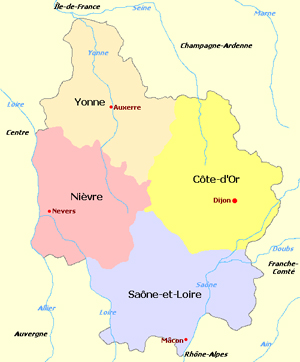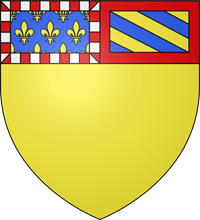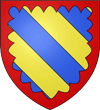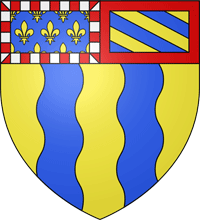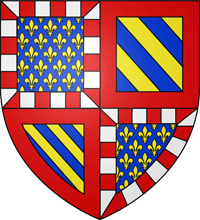|
|
|
|
||||||||||||||||||
 |
||||||||||||||||||||
I will add a brief history of Burgundy in due course
| A Very Short History of Burgundy |
| The origin of the Burgundian people is obscure and there are several theories: generally they are thought to be of Germanic origin and have migrated into the Western Roman Empire during its collapse, possibly from Bornholm in modern Denmark. The Burgundians established the Kingdom of Burgundy in the borderlands between Switzerland, France, and Italy in 411, but in 534 the Franks defeated the last of the Burgundian kings and absorbed the territory into their own growing Frankish Empire. During the time of this Empire and after its dissolution, there emerged three separate Burgundy units: 1) The Kingdom of Upper Burgundy based around Lake Geneva 2) The Kingdom of Lower Burgundy around Provence 3) The Duchy of Burgundy west of the River Sôane. The two Kingdoms of Burgundy became united as simply the Kingdom of Burgundy in 933, which in 1032 was absorbed into the Holy Roman Empire. This now single Kingdom of Burgundy later became known as the Kingdom of Arles. The Duchy of Burgundy itself was annexed by the French throne in 1004. During the 12th and 13th centuries the County of Burgundy emerged from the previous Kingdom of Upper Burgundy and became known as the Free County of Burgundy or the Franche-Comté. King John II of France gave the Duchy of Burgundy to his youngest son known as Philip the Bold. The Dukes of Burgundy progressively built up a Burgundian 'Empire', in a large part by marriage. The Duchy and County of Burgundy became united and there developed a number of fiefdoms on the borders between the Kingdom of France and the Holy Roman Empire; their heartland was in the Low Countries, mainly Flanders and Brabant. The Burgundian court came to outshine that of France both culturally and economically and in due course politically. During the insanity of King John II's son, Charles VI, a rivalry developed between Philip the Bold, the King's uncle and Louis, Duke of Orléans, the King's brother, about who should take care of matters of state . Philip was a capable man while Louis was profligate and generally incompetent. This would eventually lead to civil war between the Kingdom and Duchy. Louis, Duke of Orléans was murdered by the supporters of Philip the Bold's son, John the Fearless, now Duke of Burgundy. John the Fearless was treacherously murdered by the supporters of the Dauphin (Charles VI's on, later Charles VII). John the Fearless's son, Philip the Good joined forces with Henry V of England in his attempt to claim the French throne. In fact it was the Burgundians who captured Joan of Arc and sold her to the English. Philip's son, Charles the Rash, was destined to become the last Duke of Burgundy, being killed at the Battle of Nancy in an attempt to extend his Burgundian territories. The Duchy was subsequently annexed by France. Charles left one daughter, Mary of Burgundy, who still inherited the remains of her father's Burgundian 'Empire': the Low Countries (the Burgundian Netherlands) and the Franche-Comté, still then a fief of the Holy Roman Empire. The Franche-Comté was much later ceded to France in 1678 in the Treaties of Nijmegen, which ended a series of wars between various continental powers and also set the northern border of France near its modern position. Mary had married Maximilian of Austria and her territories passed to him on her early death. He moved his capital to the Burgundian Netherland and was later to become Holy Roman Emperor. Burgundy as a unit disappeared during the French Revolution being replaced by several departments. It was revived as a region in the 1970's more or less corresponding with the old duchy |
With many thanks to Tony Carr for allowing me to use the photographs from Fontenay Abbey,Saint-Père-de-Vézelay and St-Thibaul
